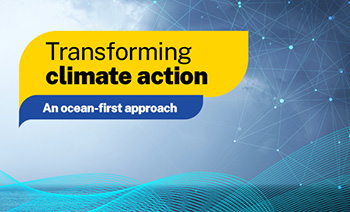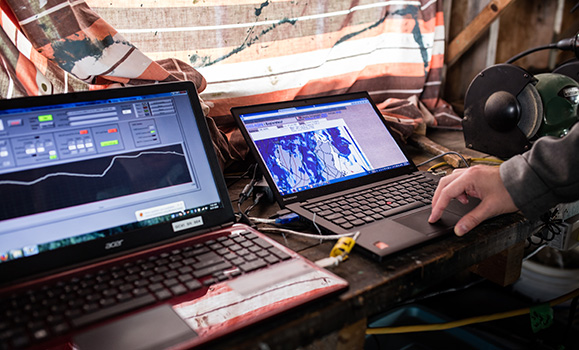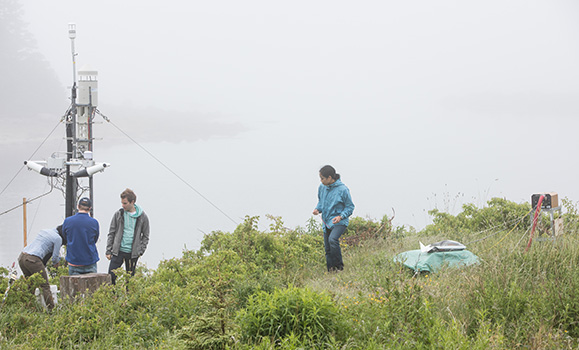Rachel Chang is an atmospheric scientist. But you won’t find her with her head in the clouds. Her focus is on the area just above the ocean’s surface, tracking how the particles that come from its waters impact the air above.
While oceanographers contributing to the Dalhousie-led Transforming Climate Action research program are consumed by the ocean’s ability to absorb the world’s carbon, Dr. Chang and her colleagues investigate the issue from above the waterline.
Together, the researchers are putting unprecedented focus on how carbon is cycling in and out of the ocean, the world’s most important climate sink, allowing Canada to take the lead in ensuring global climate targets are on track with our environmental reality.
The other side of the sink
What is the ocean putting into the air? It’s a question we need to understand to grapple fully with the dynamics that determine the ocean’s ability to help assuage climate change.
“There are layers on top of the ocean that prevent gases from absorbing, there are waves, there are storms, there is sea spray, they can all have an impact,” says Dr. Chang. “The presence of waves can increase the CO2 absorption into the ocean by a factor of two. Whether you have strong winds, or no winds can have drastic effects.”
Billions of beakers floating in the air
Dr. Chang says fog offers an ideal laboratory for studying the interplay between air and ocean, especially when it’s comprised of droplets formed on particles released by the sea. She focuses on these droplets because each of them is like a little floating beaker where chemical reactions take place.
Transformational Climate Action

Emerging science reveals the ocean's ability to absorb CO2 and regulate temperatures is changing in ways we don’t understand. These critical shifts are not accounted for in climate targets – a risk we can no longer take. With support from the Canada First Research Excellence Fund , Dalhousie is leading an ocean-first approach to tackle climate change and equipping Canada with the knowledge, innovations, and opportunities to secure a positive climate future.
 The researchers monitor the readings of their sensors.
The researchers monitor the readings of their sensors.
Along coastlines and on ships at sea, she measures air particles before, during and after fog and collects fog water to test the chemical composition, which can help her learn where the particles came from.
“There is all sorts of chemistry happening in fog, and definitely it effects carbon. But how is still yet to be discovered.
 Making digital sense of the fog.
Making digital sense of the fog.
Empowered for tough science
The interchange between ocean and air offers innumerable research questions, yet comparably few scientists are pursuing them. Dr. Chang says that it’s simply because it’s difficult science to pursue. She notes that exchanges between boundaries are always hard to study and the variability of conditions over time makes sustained observations extremely difficult.
With support from the Canada First Research Excellence Fund, the research team will pursue concerted and sustained research in this understudied area, allowing Canada to take a global lead at the ocean-climate nexus.
“The hope is that we will be able to measure over a long period, under calm and extreme conditions, and so we can get some idea of what’s changing, how it’s changing depending on what is and is not in the water, and under different types of conditions.”
 Adjusting the equipment.
Adjusting the equipment.

